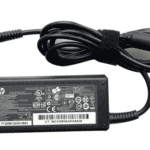Is your laptop crawling along at a snail’s pace? You’re not alone. Many laptop owners face frustrating delays when trying to work, browse, or play games. The most effective ways to speed up your laptop include uninstalling unnecessary programs, limiting startup applications, and ensuring you have enough free storage space. These simple changes can make a huge difference in how your computer performs.
Slow performance often comes from having too many programs running at once. Your laptop has limited resources, and when too many apps compete for attention, everything slows down. Restarting your computer regularly can help clear memory and resolve temporary issues that might be causing slowdowns.
If basic software tweaks don’t help enough, you might need to consider hardware solutions. Adding more RAM can significantly boost performance, especially if you multitask frequently. For older laptops with mechanical hard drives, upgrading to an SSD can dramatically improve speed since data loads much faster from solid-state storage.
How to Speed Up Your Slow Laptop: A Step-by-Step Guide
A slow laptop can be frustrating, affecting productivity and user experience. Whether your laptop is aging or just bogged down by software, here are practical steps to boost its performance in 2025.
1. Restart Your Laptop Regularly
- Restarting clears temporary files and frees up memory.
- Avoid leaving your laptop on for days without rebooting.
2. Remove Unnecessary Startup Programs
- Press Ctrl + Shift + Esc to open Task Manager (Windows) or go to System Preferences > Users & Groups > Login Items (Mac).
- Disable programs that automatically start but aren’t essential.
3. Uninstall Unused Software
- Go to Settings > Apps (Windows) or Applications folder (Mac).
- Remove applications you no longer use to free space and reduce background processes.
4. Clean Up Disk Space
- Use built-in tools like Disk Cleanup (Windows) or Optimize Storage (Mac).
- Delete temporary files, caches, and large unused files.
- Consider moving large files to an external drive or cloud storage.
5. Upgrade Your Hardware
- Add more RAM: Improves multitasking and speed.
- Switch to an SSD: Replacing an HDD with a Solid State Drive dramatically speeds up boot and load times.
6. Scan for Malware and Viruses
- Run a full system scan with trusted antivirus software.
- Remove any detected threats that can slow down your system.
7. Update Your Operating System and Drivers
- Keep Windows, macOS, and device drivers up to date for security patches and performance improvements.
8. Adjust Visual Effects and Power Settings
- On Windows, go to System > Advanced system settings > Performance Settings and select “Adjust for best performance.”
- Use Power Saver or Balanced mode rather than High Performance to conserve resources.
9. Manage Browser Performance
- Clear browser cache regularly.
- Disable unnecessary extensions and plugins.
- Limit the number of open tabs.
10. Use Performance-Boosting Software
- Consider trusted system optimization tools that clean junk files and optimize settings.
- Be cautious of apps that promise miracles; research before installing.
Bonus Tips
- Keep your laptop physically clean and well-ventilated to avoid overheating.
- Reinstall your operating system if performance issues persist despite optimization.
Key Takeaways
- Clean up your laptop by removing unused programs and limiting startup applications to free up system resources.
- Restart your computer regularly and keep Windows updated to maintain optimal performance.
- Consider hardware upgrades like adding RAM or switching to an SSD if software solutions don’t provide enough improvement.
Understanding the Causes of a Slow Laptop
Laptops slow down for many reasons, from hardware limitations to software issues. Finding the root cause is the first step to fixing performance problems.
Assessing the Processor Performance
The processor (CPU) is your laptop’s brain. Older or less powerful processors struggle with modern software demands. When too many programs run at once, your processor gets overwhelmed.
You can check processor usage through Task Manager on Windows (press Ctrl+Alt+Delete) or Activity Monitor on Mac. If usage stays above 80% during simple tasks, your processor might be the bottleneck.
Some laptops have power-saving features that slow the processor to save battery. Check your power settings to ensure your laptop isn’t unnecessarily limiting performance when plugged in.
Outdated processors can’t be easily upgraded in most laptops. If your processor is the main issue, you might need to manage programs better or consider a new laptop.
Evaluating RAM Usage
RAM (Random Access Memory) gives your laptop the workspace to handle active programs. When RAM fills up, your laptop slows dramatically as it relies on the much slower hard drive for memory.
Most modern laptops need at least 8GB of RAM. With only 4GB (as mentioned in the search results), you’ll likely experience slowdowns when multitasking or using memory-intensive applications.
You can check RAM usage in Task Manager or Activity Monitor. If usage regularly hits 80% or higher, you need more RAM or must run fewer programs.
Browser tabs are major RAM consumers. Each tab can use hundreds of megabytes of memory. Close unnecessary tabs to free up resources.
Many laptops allow RAM upgrades. Adding more RAM is often the most cost-effective way to speed up an older laptop.
Checking the Health of Your Hard Drive
Hard drives impact laptop speed in two critical ways: available space and drive type. A nearly full hard drive slows everything down. Try to keep at least 15% of your drive space free.
Traditional hard disk drives (HDDs) are much slower than solid state drives (SSDs). Upgrading to an SSD is one of the most dramatic speed improvements you can make.
Signs of a failing hard drive include:
- Unusual clicking noises
- Programs taking forever to open
- Frequent freezes or crashes
- Files corrupting without reason
Use the built-in disk checking tools in your operating system to identify hard drive errors. Windows has CHKDSK, while Macs have Disk Utility.
Regularly cleaning up temporary files and removing unused programs helps maintain drive performance.
Identifying Malware and Viruses
Malware and viruses can severely impact performance while running harmful processes in the background. They might use your processor and network connection for their own purposes.
Warning signs include:
- Laptop suddenly becoming slow
- Strange pop-ups appearing
- Programs crashing frequently
- Battery draining faster than normal
Run a full system scan using reliable antivirus software. Windows Defender (built into Windows) provides good basic protection. For Macs, run Malware Removal Tool.
Be careful about downloading software from untrusted sources. Many free programs bundle unwanted software that runs in the background and slows your system.
Browser extensions can also act like malware, using resources and tracking your activity. Review and remove unnecessary extensions.
Optimizing Windows 10 Settings
Windows 10 offers several built-in options to boost your laptop’s performance. Making a few simple adjustments to your system settings can lead to noticeable improvements in speed without installing any additional software.
Performing Timely Windows Updates
Windows updates are crucial for maintaining your laptop’s performance and security. Microsoft regularly releases patches that fix bugs and optimize system processes.
To check for updates, go to Settings > Update & Security > Windows Update and click “Check for updates.” Install any available updates immediately.
Set your update preferences to install automatically during off-hours. This prevents updates from interrupting your work and ensures your system always has the latest performance improvements.
Many users don’t realize that outdated drivers can significantly slow down their computers. Windows Update often includes driver updates for hardware components like graphics cards and network adapters.
If your laptop feels sluggish after an update, restart it. This simple step clears temporary files and completes installation processes that might be running in the background.
Managing Startup Programs
Too many programs launching at startup can dramatically slow down your boot time and overall performance.
- Press Ctrl+Shift+Esc to open Task Manager
- Click the “Startup” tab
- Review the list of programs that start automatically
- Disable unnecessary items by right-clicking and selecting “Disable”
Focus on disabling programs you rarely use or can start manually when needed. Common culprits include cloud storage apps, messaging programs, and update tools for rarely used software.
Pay attention to the “Startup impact” column. Programs labeled “High” consume the most resources during boot. These are good candidates for disabling unless absolutely necessary.
Check your system tray (near the clock) for hidden running programs. Right-click and close any you don’t actively need.
Adjusting Visual Effects for Performance
Windows 10’s visual effects look nice but can consume valuable system resources, especially on older laptops.
To adjust visual settings:
- Type “performance” in the search bar
- Select “Adjust the appearance and performance of Windows”
- Choose “Adjust for best performance” or customize individual settings
Consider disabling animation effects like fading, sliding menus, and shadows. These small visual elements use processing power that could be better utilized elsewhere.
Transparency effects in the taskbar and Start menu can be disabled by going to Settings > Personalization > Colors and turning off “Transparency effects.”
If you have an older laptop with integrated graphics, reducing the screen resolution can improve performance. Right-click on the desktop, select “Display settings,” and choose a lower resolution that still looks acceptable.
Cleaning and Maintenance
Regular cleaning and maintenance can significantly improve your laptop’s performance. These simple housekeeping tasks free up valuable resources and help your system run more efficiently.
Clearing Temporary Files
Temporary files build up over time and can slow down your laptop. Your computer creates these files when you browse websites or use programs, but often doesn’t delete them automatically.
To clear temporary files in Windows, press the Windows key + R, type “%temp%” without quotes, and hit Enter. This opens the temp folder where you can select all files and delete them. Some files may be in use and can’t be deleted – this is normal.
Another quick method is using the Disk Cleanup tool. Right-click on your main drive (usually C:), select Properties, and click Disk Cleanup. Check the boxes for temporary files, downloaded program files, and other unnecessary items before clicking OK.
For Mac users, open Finder, select Go > Go to Folder, type “~/Library/Caches” and delete the contents of folders inside (not the folders themselves).
Freeing Up Disk Space
When your hard drive gets too full, your laptop slows down dramatically. Aim to keep at least 15-20% of your disk space free for optimal performance.
Start by uninstalling unused programs. On Windows, go to Settings > Apps > Apps & features, then sort by size to find the biggest space-users. On Mac, drag unused applications from the Applications folder to the Trash.
Move large files like photos, videos, and documents to external storage or cloud services. Tools like WinDirStat (Windows) or DiskInventoryX (Mac) help identify what’s taking up space by showing visual maps of your disk usage.
Consider enabling Storage Sense on Windows 10/11, which automatically removes temporary files and items in the recycle bin. Go to Settings > System > Storage to turn it on.
Emptying the Recycle Bin
The Recycle Bin stores deleted files until you permanently remove them. Many people forget this step, essentially keeping deleted files on their computer.
To empty the Recycle Bin on Windows, right-click its icon on your desktop and select “Empty Recycle Bin.” A confirmation dialog will appear – click Yes to permanently delete the files.
You can also set your Recycle Bin to automatically empty. Right-click the Recycle Bin, select Properties, and adjust the “Custom size” slider to a lower value. Some Windows versions offer an option to automatically delete files that have been in the Recycle Bin for over 30 days.
Mac users should right-click the Trash icon in the Dock and select “Empty Trash.” For automatic cleanup, go to Finder > Preferences > Advanced and check “Remove items from the Trash after 30 days.”
Hardware Upgrades and Replacements
When your laptop drags its feet, upgrading key hardware components can breathe new life into it without buying a whole new machine. These physical changes deliver immediate speed improvements that software tweaks alone cannot match.
Upgrading to an SSD
Replacing your traditional hard drive with a solid-state drive (SSD) is possibly the most effective way to speed up an older laptop. Unlike mechanical hard drives with moving parts, SSDs have no physical components that need to spin up, allowing them to access data almost instantly.
The performance difference is dramatic. Boot times can shrink from minutes to seconds. Programs that once took forever to open now launch quickly. Even basic operations like file transfers happen much faster.
Installation is relatively straightforward for most laptops. You’ll need to clone your existing drive or perform a fresh system installation. SSDs have also become much more affordable in recent years, with 500GB drives often available for under $60.
When shopping for an SSD, look for models with read/write speeds of at least 500 MB/s. The standard 2.5-inch SATA SSDs work with most laptops, while newer models might support faster M.2 NVMe drives.
Increasing RAM Capacity
RAM (Random Access Memory) determines how many programs your laptop can run simultaneously without slowing down. When RAM fills up, the system relies on much slower disk-based virtual memory, creating a major bottleneck.
Most laptops from the last few years allow RAM upgrades. Check your laptop’s specifications to find the maximum supported amount and the correct type (DDR3, DDR4, etc.). Many older laptops run on just 4GB of RAM, but upgrading to 8GB or 16GB can make a huge difference.
The upgrade process typically involves:
- Opening the laptop’s access panel
- Locating the RAM slots
- Carefully removing existing modules (if necessary)
- Inserting new RAM sticks
Price-wise, 8GB of RAM generally costs between $30-$60 depending on type and speed. The improvement is especially noticeable when multitasking or using memory-intensive applications like photo editors or modern web browsers.
Enhancing USB Connectivity
While not directly affecting internal performance, upgrading your laptop’s USB capabilities can significantly improve data transfer speeds and peripheral functionality.
If your laptop only has older USB 2.0 ports, adding a USB 3.0 or 3.1 expansion card (for laptops with expansion slots) or a high-quality USB hub can boost transfer speeds up to 10 times faster. This makes a huge difference when using external drives or transferring large files.
Some compact USB hubs provide not just faster connections but also additional functionality like ethernet ports, SD card readers, or display outputs. These multi-function hubs effectively modernize older laptops.
For laptops without upgradeable ports, consider USB docking stations that connect to your existing ports but provide higher-speed connections to peripherals. These solutions typically cost between $30-$100 depending on features.
Software Updates and Driver Management
Keeping your software updated and managing your drivers properly can dramatically boost your laptop’s performance. These simple maintenance tasks often get overlooked but make a big difference in how fast your computer runs.
Updating Outdated Drivers
Outdated drivers can seriously slow down your laptop. Drivers are small programs that help your computer communicate with hardware devices like printers, graphics cards, and Wi-Fi adapters.
To update your drivers in Windows:
- Open Device Manager (right-click Start button)
- Look for devices with yellow warning symbols
- Right-click on the device and select “Update driver”
For more reliable results, visit your laptop manufacturer’s website. They usually have a support section with the latest drivers for your specific model. Companies like HP, Dell, and Lenovo offer tools that scan your system and install needed updates automatically.
Third-party software can also help manage drivers, but be careful to choose reputable programs to avoid malware.
Running Antivirus Scans
Viruses and malware often run in the background, stealing resources and making your laptop sluggish. Regular antivirus scans help catch these problems.
Windows comes with built-in protection called Windows Security (formerly Windows Defender). To run a scan:
- Open Windows Security from the Start menu
- Select “Virus & threat protection”
- Click “Quick scan” (or choose Full scan for a deeper check)
Set up automatic scans to run weekly. This keeps your laptop protected without you having to remember.
For extra protection, consider running a second opinion scanner like Malwarebytes occasionally. These programs can catch things your main antivirus might miss.
Remove any suspicious programs from your startup items to prevent them from loading when you turn on your laptop.
Task Management for Improved Efficiency
Managing your computer’s tasks can dramatically speed up your laptop’s performance. By controlling what programs run and when, you can free up valuable system resources.
Monitoring Background Processes
Background processes often consume system resources without you knowing it. Many programs start automatically when you turn on your computer and continue running in the background. These hidden programs eat up memory and CPU power that could be used for your active tasks.
To check what’s running in the background, press Ctrl+Alt+Delete and select Task Manager, or right-click on the taskbar and choose Task Manager. Look for programs you don’t recognize or need. Pay special attention to items with high memory or CPU usage.
Some common background resource hogs include:
- Cloud storage sync tools
- Update services
- Messenger applications
- Browser helper objects
Try closing programs you’re not using instead of minimizing them. This frees up memory that can be used for other tasks.
Utilizing the Task Manager
The Task Manager is your command center for performance monitoring and task control. It shows you exactly what’s running and how much of your system resources each process is using.
To get the most from Task Manager:
- View detailed information – Click “More details” to see all running processes
- Sort by resource usage – Click column headers to sort processes by CPU, Memory, Disk, or Network usage
- End unnecessary tasks – Right-click on resource-heavy programs and select “End task” if you don’t need them
For startup management, click the “Startup” tab in Task Manager. Here you’ll see which programs launch when your computer starts. Disable programs you don’t need immediately after startup by right-clicking them and selecting “Disable.”
Windows 10 and 11 include enhanced Task Manager features that help identify performance bottlenecks through color coding – red indicates high resource usage that might be slowing your system.
Best Practices for Ongoing Laptop Care
Keeping your laptop running smoothly requires regular attention and good habits. Taking care of your computer isn’t just about fixing problems when they happen but preventing them before they start.
Regularly Scheduling Maintenance Tasks
Set up a monthly cleaning routine for your laptop. Use compressed air to blow dust from keyboard cracks and vents. Dust buildup can block air flow and cause overheating.
Create a schedule to run disk cleanup and disk defragmentation tools. For Windows users, type “Disk Cleanup” in the search bar to find and remove temporary files. If you have a traditional hard disk drive (HDD), run the defragmentation tool quarterly to organize files. Note that SSDs don’t need defragmentation.
Check for and install system updates regularly. These often contain performance improvements and security patches. Windows typically installs these automatically, but it’s worth checking manually once a month.
Consider using built-in tools like Windows’ Storage Sense to automatically delete temporary files and empty the recycle bin.
Practicing Safe Computing Habits
Be selective about which programs start automatically when you turn on your laptop. Press Ctrl+Shift+Esc to open Task Manager, then click on the “Startup” tab to disable unnecessary programs.
Install reputable antivirus software and run regular scans. Malware can significantly slow down your system while running in the background.
Avoid keeping too many browser tabs open. Each tab uses memory and can drain your battery faster. Try using bookmarks instead of leaving tabs open.
Be careful about what you download. Stick to official app stores and trusted websites. Many free programs bundle unwanted software that can slow down your computer.
Give your laptop a complete shutdown at least once a week rather than always putting it to sleep. This clears the memory and lets your system start fresh.
Frequently Asked Questions
Many laptop users face performance issues and wonder about specific ways to improve speed based on their operating system and hardware. These questions address common scenarios for different Windows versions and laptop brands.
What are the best ways to optimize Windows 11 for faster laptop performance?
Windows 11 can be optimized by disabling startup programs that aren’t essential. Press Ctrl+Shift+Esc to open Task Manager, then click the Startup tab to disable unnecessary programs.
Regular updates are crucial for Windows 11 performance. Go to Settings > Windows Update and install all available updates, including driver updates for your hardware.
The new Storage Sense feature automatically manages space. Access it through Settings > System > Storage to enable automatic cleanup of temporary files and downloads folder.
What steps can I take to increase the speed and efficiency of a Windows 10 laptop?
Restart your Windows 10 laptop regularly to clear memory and stop background processes. Many users leave their computers running for days, which slows performance significantly.
Remove bloatware and unnecessary programs through Settings > Apps > Apps & features. Sort by size to identify space-hogging applications you rarely use.
Windows 10’s Performance troubleshooter can identify and fix issues automatically. Find it in Settings > Update & Security > Troubleshoot > Additional troubleshooters.
How can I use the ‘Run’ dialog to improve my laptop’s operating speed?
The Run dialog provides quick access to system maintenance tools. Press Win+R and type “cleanmgr” to open Disk Cleanup, which removes temporary files and system clutter.
Type “msconfig” in the Run dialog to access System Configuration. The Services and Startup tabs let you disable unnecessary background processes that slow your laptop.
For memory diagnostics, enter “mdsched.exe” in the Run dialog. This tool checks RAM for errors that might cause slowdowns and crashes.
What procedures are recommended for cleaning up a laptop to enhance its functionality?
Physically clean your laptop’s cooling system by removing dust from vents and fans. Overheating often causes processors to throttle speed, resulting in slower performance.
Organize files and remove duplicates from the hard drive. Tools like Windows’ built-in Storage Sense can help identify large or unused files that can be deleted.
Defragment HDD drives (not SSDs) by typing “defrag” in the search bar and using the Optimize Drives tool. This reorganizes files for faster access times.
Is it possible to significantly improve the performance of an aging laptop?
Upgrading RAM is often the most cost-effective way to breathe new life into an older laptop. Many models allow memory upgrades from 4GB to 8GB or more.
Replacing a traditional hard drive with an SSD can dramatically improve boot times and application loading. This upgrade often makes the most noticeable difference.
Consider a clean Windows installation rather than continuing with years of accumulated software bloat. Back up important files first, then use Windows reset options.
How can I maintain optimal performance on a Lenovo laptop to prevent slowdowns?
Lenovo laptops include Vantage software that optimizes system performance. Use it to update drivers, run hardware scans, and manage power settings effectively.
Check power mode settings on Lenovo devices. Many models have performance modes that can be accessed through Vantage or by pressing Fn+Q to cycle through power profiles.
Clear system vents regularly, especially on ThinkPad models. Lenovo laptops often have comprehensive cooling systems that perform best when free from dust buildup.







